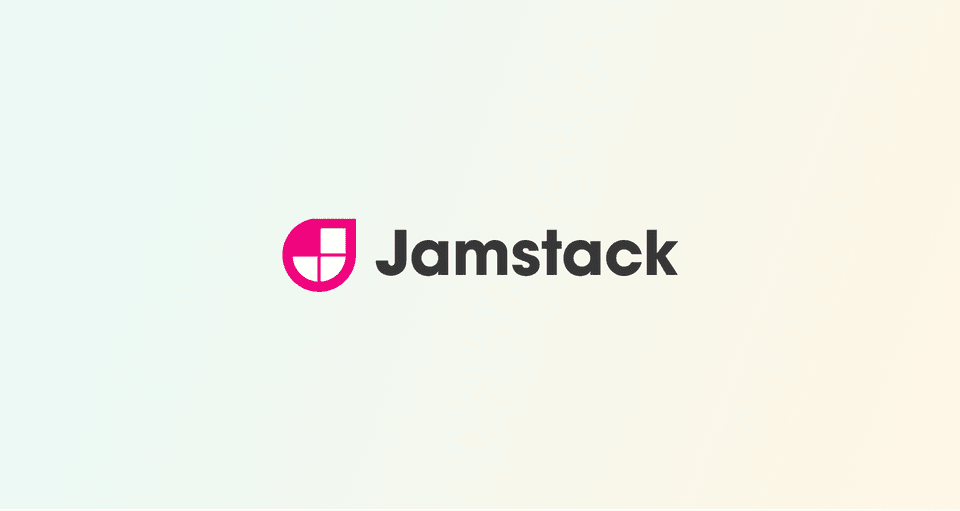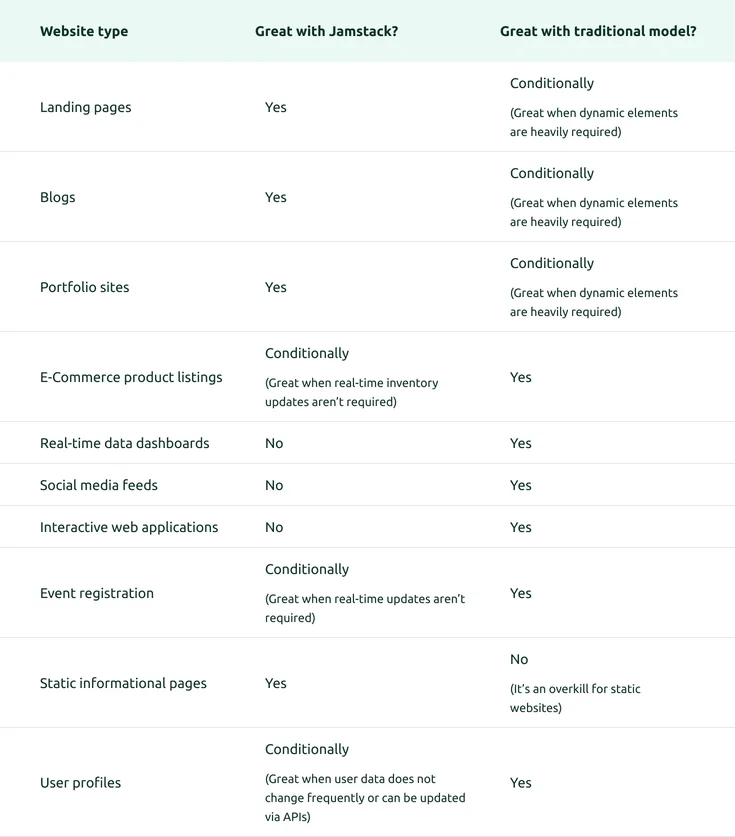What is Jamstack and When to Choose It?

Content:
Think of two restaurants, one that crafts each dish from scratch, and another that prepares ingredients ahead of time. Similarly, traditional and Jamstack websites have their own strengths and weaknesses. Let's dive into the differences between these two approaches.
Traditional websites cook up fresh content from scratch
When you place an order in a traditional restaurant, the kitchen staff springs into action, gathering ingredients from various storage areas and combining them according to the recipe.
This approach ensures that your meal is always fresh. However, it can be a time-consuming process, especially during peak hours when the kitchen is flooded with orders. If the kitchen staff is small or works at a slow pace, you may find yourself waiting longer for your meal to arrive, which can be frustrating.
In this analogy, the kitchen staff represents the server, and the restaurant represents a website. Just as the kitchen staff prepares each dish from scratch, a website's server processes each request from scratch, gathering data from databases and combining it according to the website's code. This approach ensures that the content is always fresh and up-to-date, but it can be slow and frustrating during peak hours if the server is underpowered or overwhelmed.
Jamstack websites combine pre-made elements with fresh content
Imagine a restaurant where the kitchen team prepares popular dishes ahead of time during slow periods, storing them in a way that preserves their freshness. When a customer places an order, the staff quickly serves the pre-prepared dish, ensuring fast service even during peak hours.
For special requests, the team combines pre-made ingredients with fresh touches, customizing the dish on the spot. This approach allows customers to enjoy a personalized experience without delays.
In this analogy, the pre-made dishes represent statically generated pages that are rapidly served through a Content Delivery Network (CDN). When a loaded page includes elements of dynamic content, the API and client-side JavaScript combine to deliver it in real-time, creating a tailored experience for each individual visitor.
What is Jamstack?
Think of Jamstack as an approach to building websites that has revolutionized the internet browsing experience by combining the best of both worlds: the efficiency of pre-generated static sites (ready-made dish components), with dynamically generated content (custom garnishes).
The approach is based on three components:
- (J) JavaScript (garnish), serving personalized dynamic content,
- (A) APIs (pre-made components), providing pre-generated parts of the website,
- (M) Markup (instruction how to assemble the components before serving), instructions for the browser on how to put all components together for display.
What benefits does Jamstack offer?
Quick Service: Unlike the traditional method, where every website is generated from zero every time a user triggers a browser request, Jamstack has pages ready to go, making things faster.
Handles More Users: Traditional websites can get easily overwhelmed with too many requests, and deny access to some users. Jamstack is ready for a crowd, with most pages prepared in advance, cutting the server load.
Smart Customization: Both approaches can tailor your website, but Jamstack does it faster by adding dynamic content customization to what's already there.
Less Need for Processing Power: Traditional websites need a lot of server space especially during peak browsing hours. Jamstack works smarter, not harder, needing less server space and power.
In short, while the traditional approach takes the old-school route of making webpages on the fly, Jamstack is all about speed and efficiency, prepping in advance and adding final touches as needed.
When to choose Jamstack?
For some dishes, like fries or burgers, fresh is best. Similarly, some websites need to update instantly, like social media or real-time data dashboards. That's where traditional methods shine. But for webpages that don't change much, like homepages, or blog posts, Jamstack offers a speedy, efficient alternative.
What scenarios does Jamstack fit?
Your content is mostly static: If your website shares information that doesn't change minute-by-minute, like a homepage, or a blog post, Jamstack is a great fit. It's like serving a cheesecake or a lasagna that's just as good pre-made and reheated.
You expect high traffic: Planning for a big event or a product launch? Just like how Jamstack Bistro can handle a rush by having meals ready, Jamstack sites are prepared to serve many visitors at once without slowing down.
You aim for a global reach: If you're serving an international crowd, you want your website to load fast, no matter where someone is visiting from. Jamstack's use of global content delivery networks ensures everyone gets a speedy experience, like having satellite kitchens all over the world.
You don’t need extensive user-based customization: When your site needs some personal touch but not a full-on chef's special, Jamstack lets you sprinkle on just the right amount of dynamic content, akin to adding a dash of special sauce to a pre-made burger to make it yours.
You're mindful about the budget and resource limits: If you're working with limited resources, think of Jamstack like a food truck that serves gourmet pre-made dishes. You don't need an expensive server, and still can offer a delightful browsing experience.
In essence, while traditional methods are akin to a full-scale restaurant that cooks everything to order, Jamstack is more like a gourmet food truck or a bistro with a smart, efficient system - ready for displaying any type of content to all users, with minimal wait times.
What pages work best with Jamstack?

What is Jamstack? – 4 takeaways from the article
- Jamstack is a modern website development model that works like a smart kitchen, combining pre-made dish components with small customer customizations.
- Unlike the traditional model, Jamstack pre-generates most of the website's content, making sure the page loads swiftly to all users, even during peak traffic hours.
- Jamstack sites are faster than the traditional ones, are always easily accessible for all users, can be individually customized based on the visiting user and time, require less server space and processing power (lower costs).
- Choose Jamstack for content that doesn’t change much minute-by-minute, websites with high traffic, and pages with global reach.